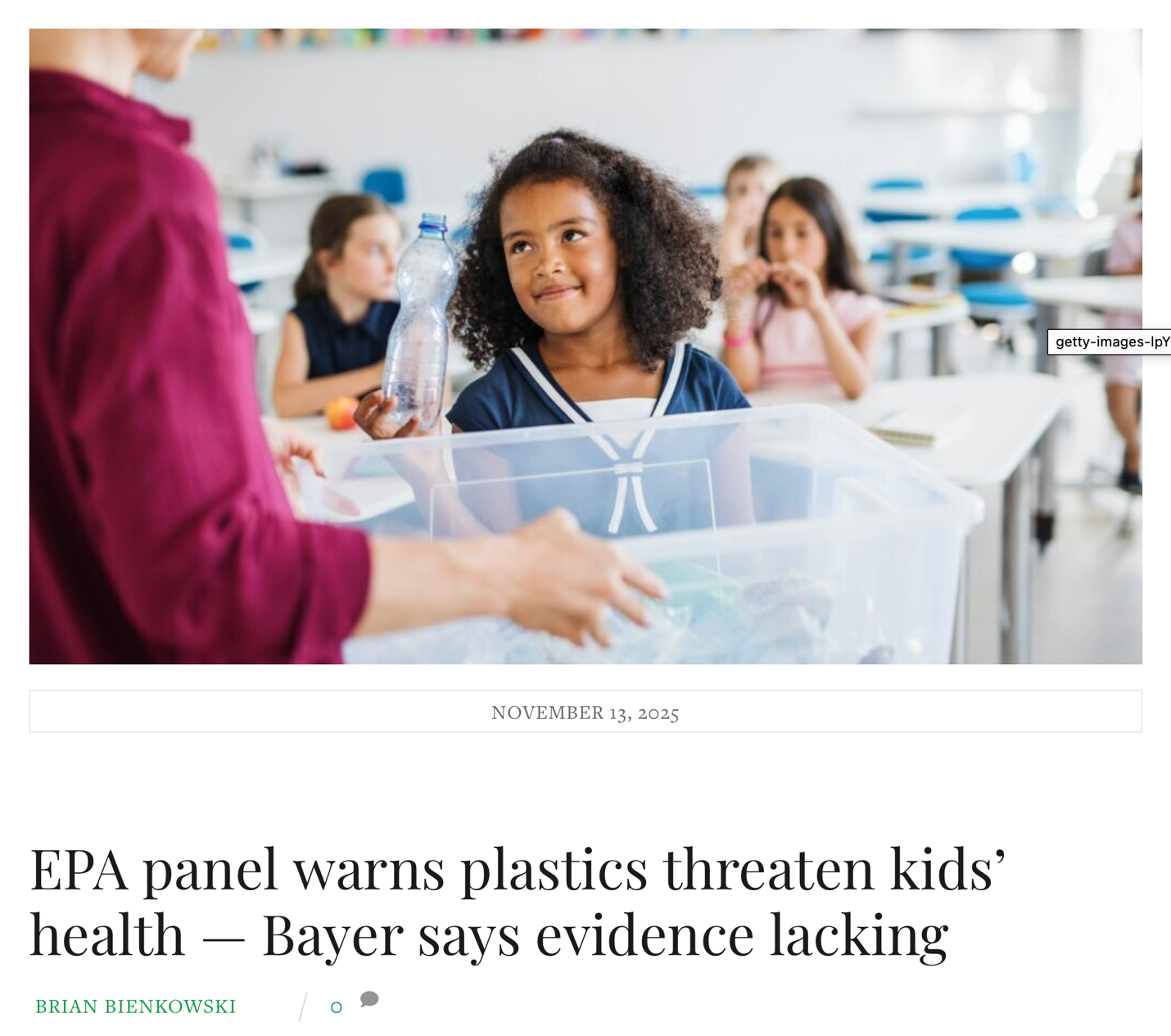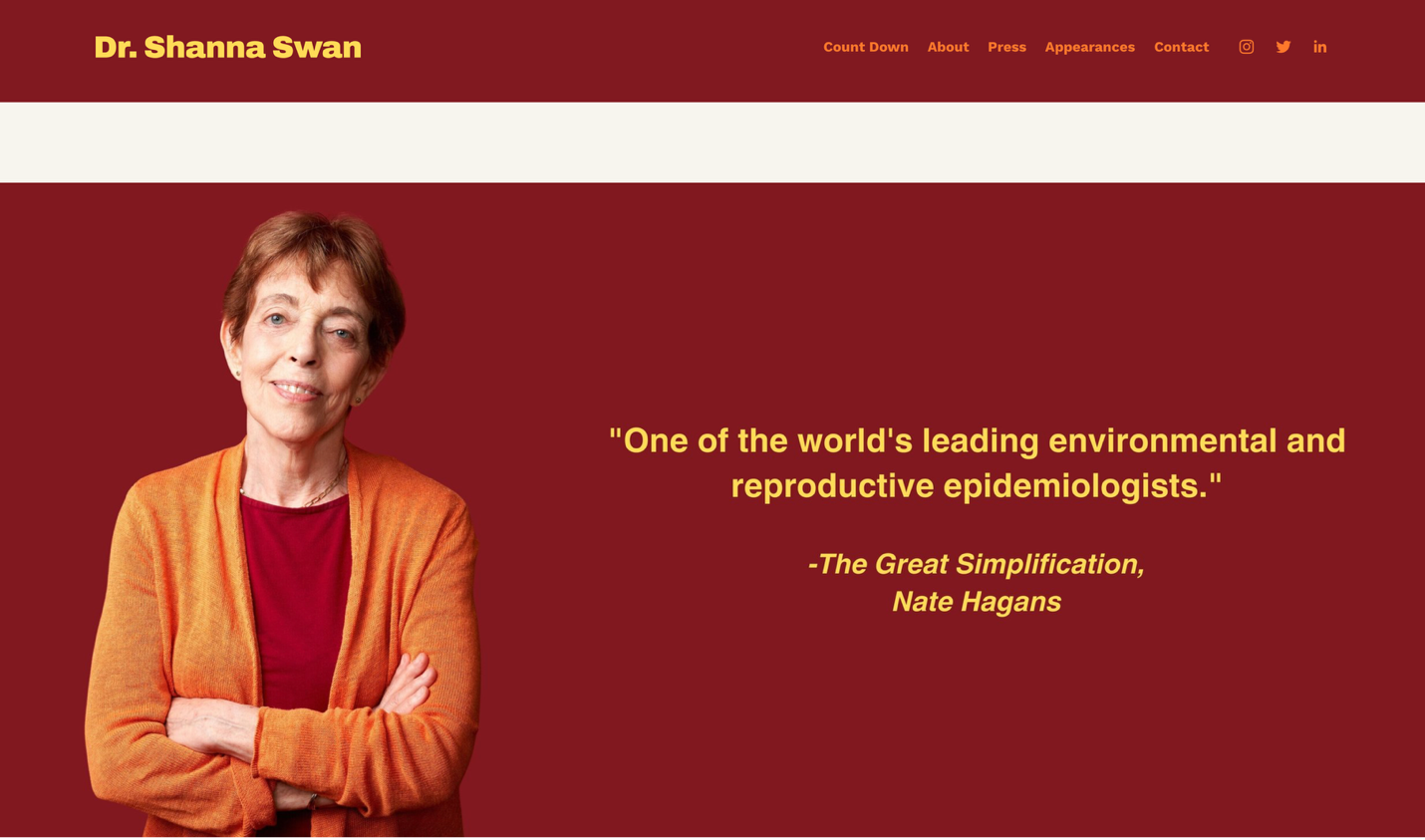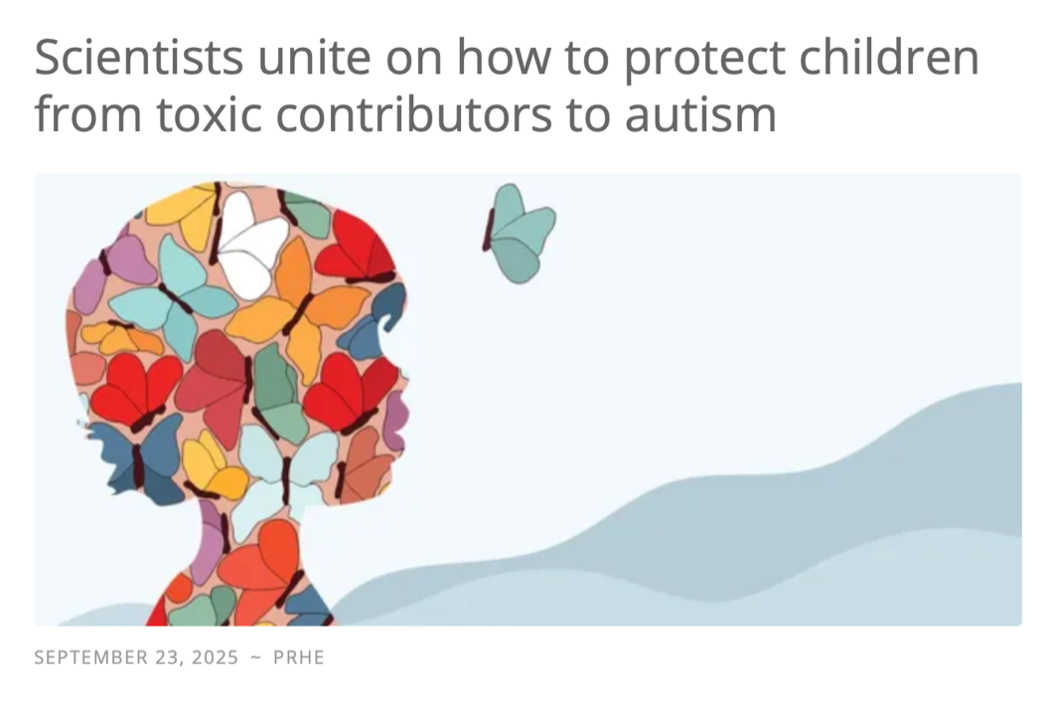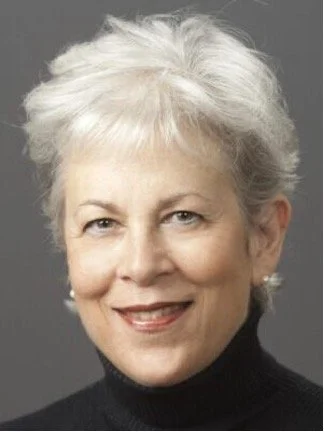I am pleased to share the Children’s Health Protection Advisory Committee to the EPA (CHPAC) Plastics and Children's Health letters that have been posted online and are available here: https://www.regulations.gov/document/EPA-HQ-OA-2025-0261-0029.
I was also just interviewed by reporter Brian Bienkowski of The New Lede as part of the group that produced the letter: https://www.thenewlede.org/2025/11/epa-childrens-health-plastic-pollution/.
One thing Bienkowski was curious about was why there are two separate letters, both included under a cover letter from the chair of the committee. There is certainly a story there, not all of which I am at liberty to discuss. Never before in CHPAC’s history have two letters emerged as a result of a failure to reach consensus. In my view – and this blog is all my own view, not the entire committee’s – this may not be an entirely bad thing.
It could be that in the past, in the desire for consensus, industry has been successful in planting “poison pills” in negotiating recommendations for children’s safety – though that metaphor may be a little on the nose considering petrochemical companies have literally poisoned generations of children in the U.S. and all over the world. In other words, in a laudable effort to seek consensus, it is sometimes possible for just one or two industry representatives on a federal advisory committee to persuade a much larger group of scientists, experts, and advocates into pulling punches when it comes to making recommendations to protect children’s environmental health. Some clarity emerges in why the EPA has been so ineffective at protecting America’s children from toxic chemicals over decades, despite the many fine people and expert scientists who have worked there.
The number one thing I personally wanted to see in these recommendations was that major professional affiliations should immediately follow the name of each person signing so that each person’s presumed allegiances might be completely legible to the public. A robust body of evidence has shown that financial conflicts of interest bias the results of scientific evaluations, and I believe all advisory committees should follow this best practice in future. The twenty-three experts who supported commonsense restrictions of non-essential plastics – plastics that, from extraction to disposal, harm children all across their lifespans – hail from institutions like Harvard, UCSF, Columbia, Morehouse, and little ole Benedictine University. The one individual who signed the letter that labels it “alarmist” to worry about toxic chemicals and microplastics – now found in lungs, breast milk, liver, kidney, uterus, testicles, urine, brain, heart, blood, stomach, intestine, meconium, infant stool, amniotic fluid, and placentas – works for Bayer Crop Sciences, which previously acquired Monsanto. Need I say more?
The letter I signed relied on systematic reviews that objectively consider the full body of scientific evidence, as recommended by the National Academy of Sciences. We found that the evidence, weighed consistently and transparently, clearly found that plastics harm children from their origins as fossil fuels, all the way to the plastic waste and microplastics that now contaminate every corner of the planet and every human body now living.
The MAHA movement currently being paid lip service at the EPA and FDA identifies plastics-related chemicals of concern – including phthalates, bisphenols, other endocrine-disrupting chemicals, and microplastics – and links them to chronic illness in our children. The Washington Post reported allegations that industry got to them before the final report made recommendations, watering down preventative actions that would have protected children, but MAHA’s first report clearly identifies “corporate capture and the revolving door” as part of the reason the petrochemical industry has gotten away with poisoning every person on Earth. I hope that under the influence of MAHA, agencies will follow the science and begin to limit plastics and all the toxic chemicals associated with them to benefit children’s health.
Now to the recommendations.
The letter signed by the vast majority of the committee recommends that government should focus on limiting plastics from fossil-fuel extraction to manufacturing to use. We must cut plastic production to protect children. We should phase out single-use plastics to the extent possible and limit harmful pollutants from petrochemical (oil-and-gas and chemical-and-plastics) sectors.
The most common recommendations for individuals to protect themselves and their children from among all the sources we reviewed are the following:
1. Do not heat plastic (including plastic wrap). Avoid putting plastic in the microwave or
dishwasher.
2. To store food and beverages, do not use plastic. Use glass, ceramic, or stainless-steel containers.
3. Eat fruits and vegetables, and when possible and practical, prefer fresh or frozen (over canned or processed) products.
4. Choose fragrance-free household and personal care products.
5. Keep dust down in the home by wet mopping, wet dusting, and using a vacuum with a high efficiency particulate air (HEPA) filter.
6. Avoid non-stick cookware.
7. Avoid plastics with resin codes 3, 6, and 7.
8. Wash hands with soap and water often, especially before handling food/ drinks or eating/
drinking.
9. Avoid products with flame retardants.
CHPAC’s recommendations should be implemented at every level of government – local, state, federal, and international. People should engage in their communities to champion zero-waste solutions everywhere, from individual homes to school cafeterias to workplaces. Individuals can do much, but ultimately, collective action is needed. Collective action to begin cutting plastic pollution will help protect the health of children everywhere, reducing health outcomes including cancer, asthma, pre-term birth, miscarriage, endocrine disruption, and developmental disorders. I hope and believe that is something all people who care about children can agree on.












